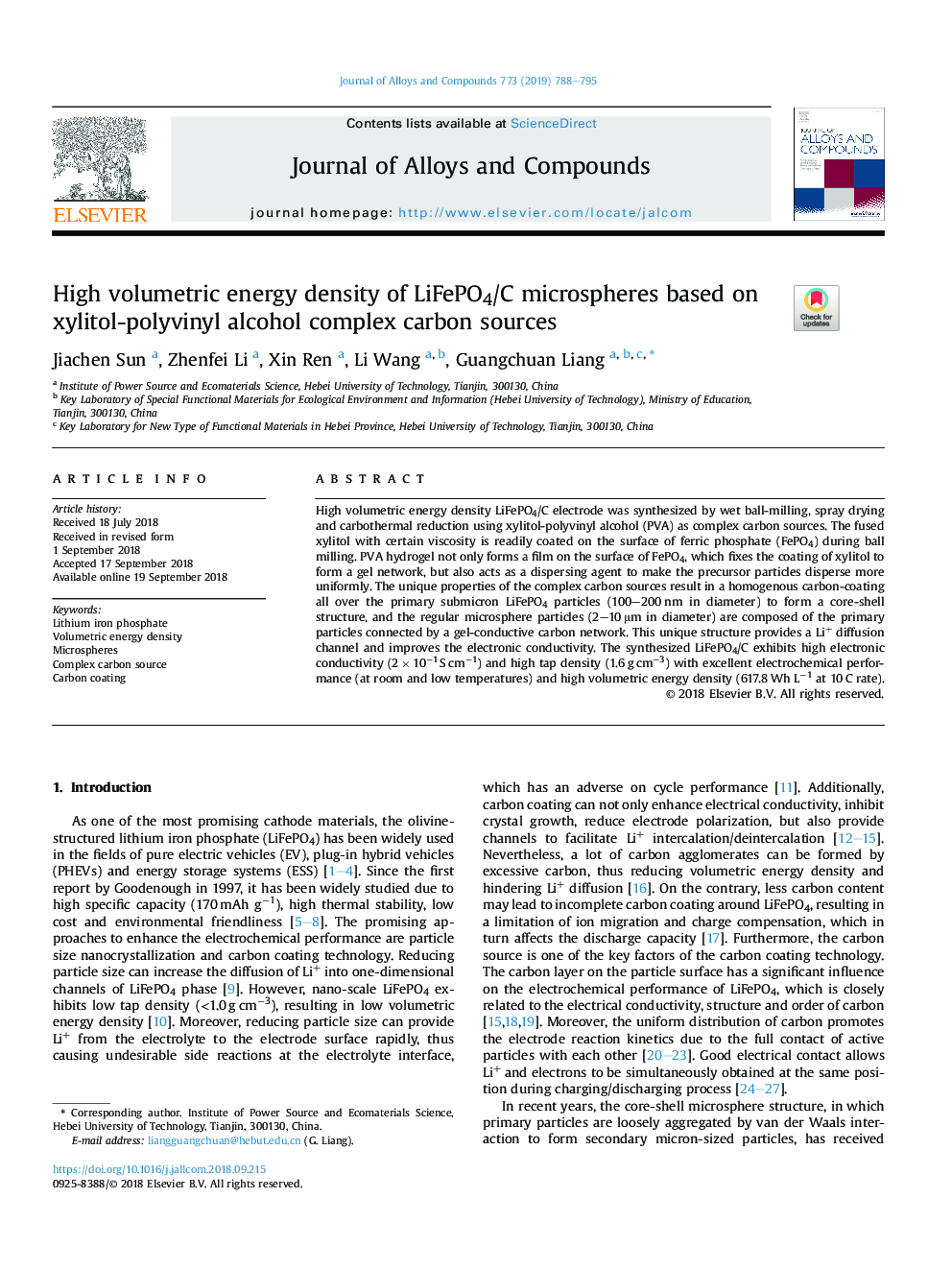| Article ID | Journal | Published Year | Pages | File Type |
|---|---|---|---|---|
| 11020041 | Journal of Alloys and Compounds | 2019 | 8 Pages |
Abstract
High volumetric energy density LiFePO4/C electrode was synthesized by wet ball-milling, spray drying and carbothermal reduction using xylitol-polyvinyl alcohol (PVA) as complex carbon sources. The fused xylitol with certain viscosity is readily coated on the surface of ferric phosphate (FePO4) during ball milling. PVA hydrogel not only forms a film on the surface of FePO4, which fixes the coating of xylitol to form a gel network, but also acts as a dispersing agent to make the precursor particles disperse more uniformly. The unique properties of the complex carbon sources result in a homogenous carbon-coating all over the primary submicron LiFePO4 particles (100-200â¯nm in diameter) to form a core-shell structure, and the regular microsphere particles (2-10â¯Î¼m in diameter) are composed of the primary particles connected by a gel-conductive carbon network. This unique structure provides a Li+ diffusion channel and improves the electronic conductivity. The synthesized LiFePO4/C exhibits high electronic conductivity (2â¯Ãâ¯10â1â¯Sâ¯cmâ1) and high tap density (1.6â¯gâ¯cmâ3) with excellent electrochemical performance (at room and low temperatures) and high volumetric energy density (617.8â¯Wh Lâ1 at 10â¯C rate).
Related Topics
Physical Sciences and Engineering
Materials Science
Metals and Alloys
Authors
Jiachen Sun, Zhenfei Li, Xin Ren, Li Wang, Guangchuan Liang,
